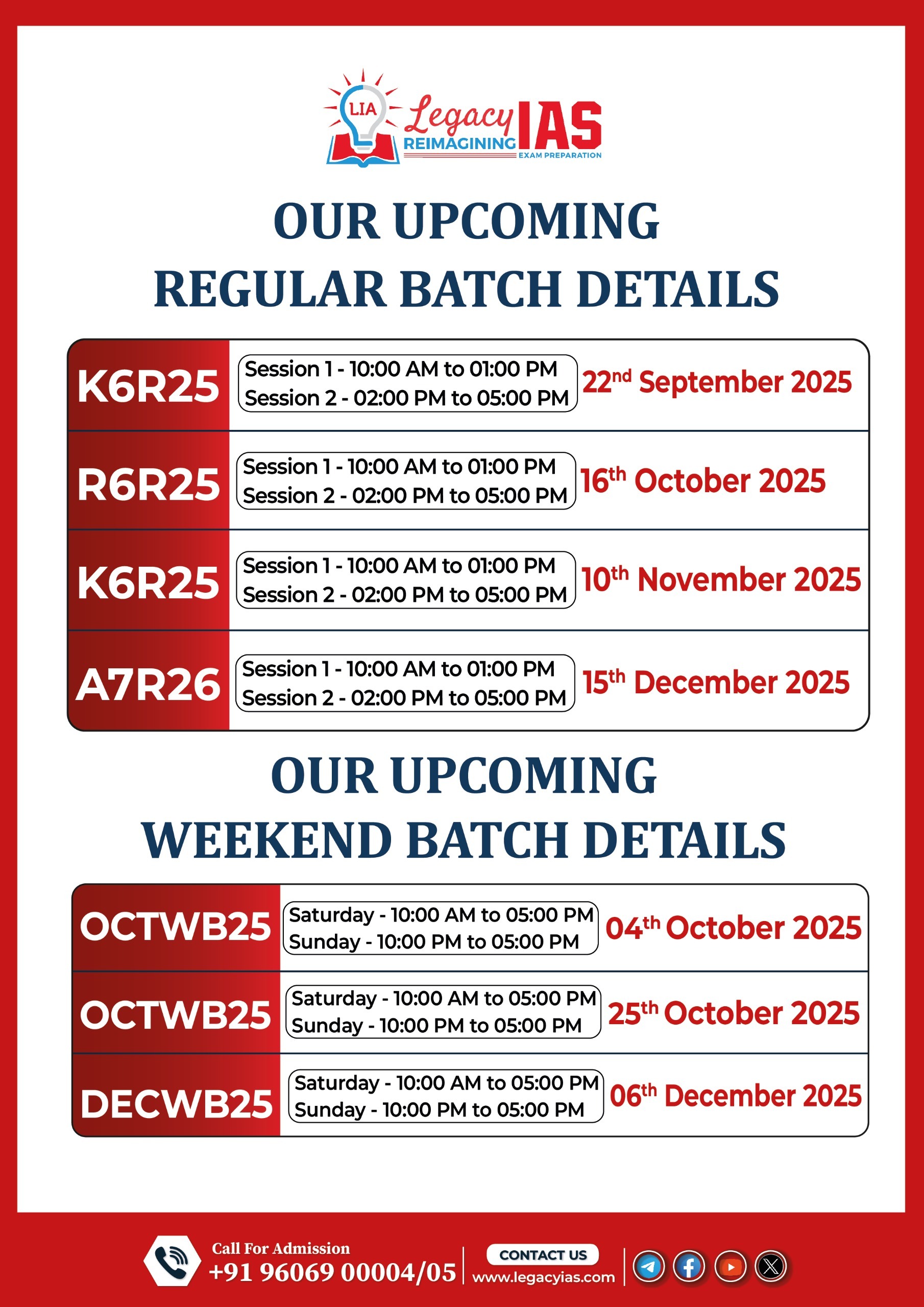Q1. Consider the following statements about CPI and WPI:
- CPI includes imported goods in its basket, while WPI does not.
- WPI gives higher weight to food articles than CPI-Combined.
- Both CPI and WPI are compiled by the same agency in India.
How many of the above statements are correct?
(a) Only one (b) Only two (c) All three (d) None
Answer: (a) Only one
Explanation:
- Correct – CPI tracks retail prices of consumer goods, including imported items that form part of household consumption (e.g., imported electronics, edible oils, gold). WPI is based on domestic wholesale transactions and excludes imported goods unless they are transacted at the wholesale stage within India after customs clearance.
- Incorrect – In WPI (2011–12 series), Primary Articles (which include food) have a weight of ~22.6%, of which food articles are ~14.3%. In CPI-Combined (2012 base), Food & Beverages have a weight of 45.86%. Hence, CPI gives much higher weight to food than WPI.
- Incorrect – CPI (all variants: Combined, Rural, Urban, IW, AL, RL) is compiled and released by the National Statistical Office (NSO) under the Ministry of Statistics and Programme Implementation (MoSPI). WPI is compiled by the Office of the Economic Adviser, Department for Promotion of Industry and Internal Trade (DPIIT), Ministry of Commerce & Industry.
Q2. Consider the following statements on GDP Deflator:
- It includes prices of all final goods and services produced domestically.
- It uses current year quantities as weights (Paasche index).
- It is published monthly by the NSO along with GDP data.
How many of the above statements are correct?
(a) Only one (b) Only two (c) All three (d) None
Answer: (b) Only two
Explanation:
- Correct – GDP Deflator = (Nominal GDP / Real GDP) × 100. It reflects price changes in all final goods and services produced within the domestic territory, including consumption, investment, government spending, and exports — but excludes imports.
- Correct – Real GDP is calculated using base-year prices, while Nominal GDP uses current-year prices. Thus, the deflator implicitly uses current-year quantity weights, making it a Paasche-type index.
- Incorrect – GDP estimates (and hence GDP Deflator) are released quarterly by the NSO (e.g., Q1: April–June released in August). There is no monthly GDP Deflator. Monthly inflation data comes from CPI/WPI, not GDP Deflator.
Q3. Consider the following statements about Inflation Types:
- Creeping inflation is moderate (2–4%) and considered healthy.
- Walking inflation occurs at 5–9% annually.
- Galloping inflation is double-digit but below 50% per month.
How many of the above statements are correct?
(a) Only one (b) Only two (c) All three (d) None
Answer: (c) All three
Explanation:
- Correct – Creeping (or mild) inflation in the range of 2–4% is considered optimal for growth as it encourages spending, investment, and wage adjustments without eroding purchasing power significantly. RBI targets 4%, which falls in this zone.
- Correct – Walking (or trotting) inflation is defined as 5–9% per annum, indicating moderate acceleration that requires policy attention but is not yet runaway.
- Correct – Galloping inflation refers to double or triple-digit annual rates (10–999% per year), equivalent to high but below 50% per month. Hyperinflation begins when monthly inflation exceeds 50% (Cagan, 1956).
Q4. Consider the following statements on WPI basket:
- WPI includes 697 items, with 117 primary, 564 manufactured.
- Fuel & Power group has the highest weight in WPI.
- WPI weights are revised every 5 years.
How many of the above statements are correct?
(a) Only one (b) Only two (c) All three (d) None
Answer: (a) Only one
Explanation:
- Correct – As per the 2011–12 WPI series (current as of 2025), the basket has 697 commodities:
- Primary Articles: 117
- Fuel & Power: 16
- Manufactured Products: 564
- Incorrect – Manufactured Products have the highest weight: 64.23%. Fuel & Power: 13.15%, Primary Articles: 22.62%.
- Incorrect – WPI base year and weights are not revised every 5 years. The current series is 2011–12 (introduced in 2017). Previous was 2004–05. Revision is irregular and depends on data availability (e.g., NAS, ASI). Next revision (2023–24 base) is under consideration.
Q5. Consider the following statements on Demand-Pull Inflation:
- It occurs when AD > AS at full employment.
- It is fueled by low interest rates and high government spending.
- It reduces real income of fixed-income groups.
How many of the above statements are correct?
(a) Only one (b) Only two (c) All three (d) None
Answer: (c) All three
Explanation:
- Correct – Demand-pull inflation arises when aggregate demand exceeds aggregate supply at or near full employment, creating excess demand pressure. This is the classic Keynesian explanation.
- Correct – Expansionary monetary policy (low repo rates) and fiscal policy (high G-sec borrowing, subsidies) increase money supply and disposable income, shifting AD rightward → demand-pull inflation.
- Correct – Fixed-income earners (pensioners, salaried class on fixed scales) experience erosion in real income as prices rise faster than nominal income.



